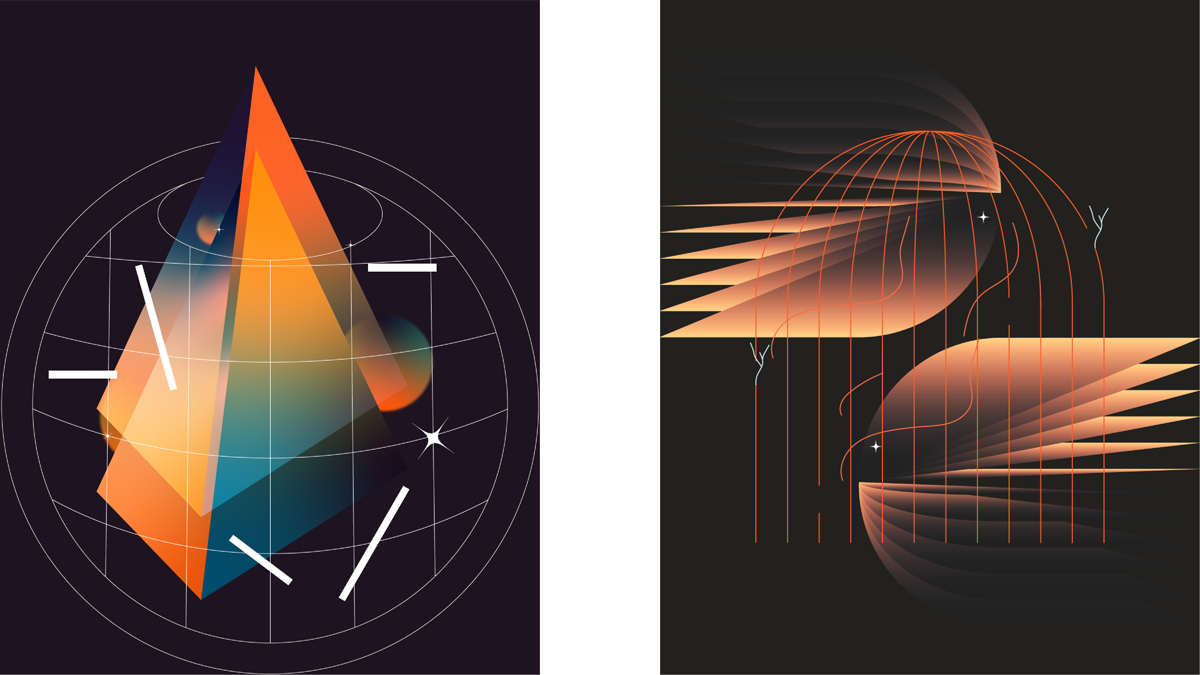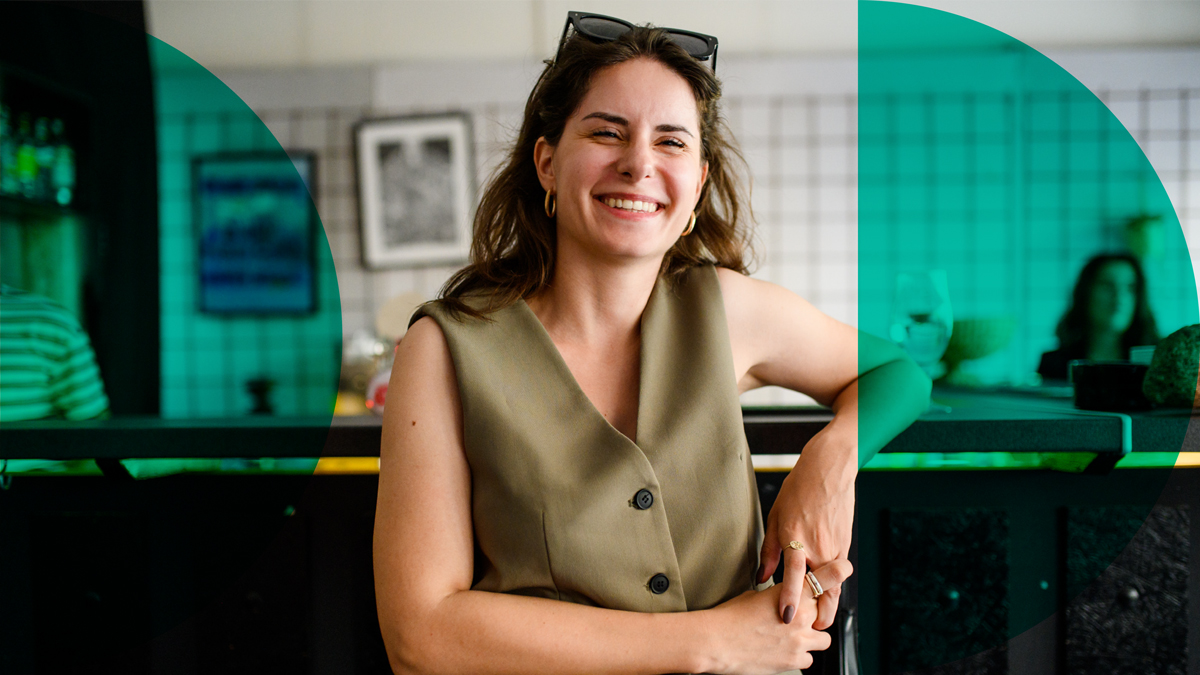‘Thanks to this project, a turn has been made in their external communication, so now these contents are much more accessible to a younger audience than years ago,’ Snežana Bulatović.
 Good morning, Snežana! Thanks for sharing your first coffee with us today! Let’s open this conversation by getting to know if this is your first time working with a cultural institution.
Good morning, Snežana! Thanks for sharing your first coffee with us today! Let’s open this conversation by getting to know if this is your first time working with a cultural institution.
Working on this project was a personal challenge for me because until now I had not had the opportunity to work with a cultural institution on such a large scale.
How challenging was it to work within a team? After this experience, what do you think are the challenges and advantages compared to working independently with a client?
A special segment of this project is teamwork, where the focus is on combined design practices and methods. Working in a team is different because it requires mutual recognition of the potential of visual expression and inclinations, while independent work is more directed towards solving usually one design problem with too little time for research phases. The advantage of teamwork lies in providing a broader perspective to the entire design process and a better structuring and organizing of work. Challenges associated with teamwork relate to location and frequency of meetings and iterations, as logistical barriers can potentially alter the pace of work.
What contribution to the development of the institution’s new identity are you most proud of?
It’s the development of external communication, particularly the aspect related to the website and social networks, for the simple reason that this segment, which is extremely significant for educating the audience and better positioning the institution within the regional cultural network, is often neglected. The institution’s online presence demonstrates its readiness to embrace new media and technologies and work with a new kind of audience and artists.
How much can you express yourself creatively in the final solution when you work within a team?
In certain segments, teamwork is extremely suitable for authorial expression because ideas are channelled better and faster when you have another designer suggesting the feasibility of certain ideas. Working with others also means learning from others, so it often happens that technical segments are mastered better and faster with additional assistance.
Has the project enabled you to further shape your design language?
What has significantly contributed to my design language in this project is the importance of communication with the client and a new way of presenting ideas. When working on a project for several years, it is inevitable that the motivation and desire to change what has already been done, under the pretext that it can be done better, will decrease and, indeed, a project like this serves as excellent preparation for any future projects.
In what aspect was the visit to the institutions useful for your research process? Do you think this should be an integral part of the practice in working with clients?
Communication with the institution greatly influences the quality of implementation of the proposed solutions. These visits enabled us to learn more about the work itself and the employees, which would later be of great importance during the implementation. Rebranding is never purely visual; it’s also about communication, and the visits and work on the spot are crucial for the success of this project.
After your experience with this project, and other work experiences, explain the difference between working with cultural institutions and clients that promote commercial content (if you have experience with them).
One of the key differences lies in the size of the project; commercial clients already have specific content and workforce dedicated to maintaining and creating that content, while cultural institutions are often preoccupied with bureaucratic and technical aspects of their work and, in that case, they are rarely concerned about branding. It’s usually necessary to first establish the foundations and educate the staff on content maintenance, which requires additional effort, compared to commercial clients, who need a designer for upgrading an existing brand.
 What of the experience gained during this project would you apply in your further independent work or work with future clients?
What of the experience gained during this project would you apply in your further independent work or work with future clients?
I have already emphasized the importance of communication with the client as the most significant segment of a project, the importance of documenting design material and educating clients if necessary. This speeds up all phases of the project, which is precisely what is usually overlooked because the emphasis is placed on the rapid development of solutions instead of long-term implementation.
What makes the cultural institution you worked on in this project unique? How does it meet the needs of a young audience?
The Danilovgrad Art Colony is one of the longest-running institutions in this region with a rich international content, but it is unknown to the broader audience due to its undefined legal status and low visibility on networks and cultural maps. Thanks to this project, a turn has been made in their external communication, so now these contents are much more accessible to a younger audience than years ago.
Why do you think this project is important for the cultural institution you collaborated with?
Projects of this type raise the awareness of the importance of the work of certain institutions and at the same time promote culture as an inseparable part of public life; they encourage the institution’s involvement in educating the younger audience and draw attention to the importance of branding as a key identity segment. Due to limited resources and technical barriers, many institutions are not able to fully develop their branding, and ReCulture is an additional motivation for them to present their activities on an international level.
What is the strongest impression that the project has left on you?
It’s the possibility of comparing international design practices with local ones and connecting with other designers. For me, as a young designer, these projects are a personal challenge and an opportunity to contribute to the work of a cultural institution. The importance of these projects lies in the increased transparency of the institutions’ work and the encouragement to young designers to participate in the creative process of branding.
Which cultural institutions in the region, and which ones outside the region, do you consider to be examples of best practice?
I would highlight the Music Centre of Montenegro, Museum of Contemporary Art in Zagreb, BITEF… What characterizes them is their relationship with the audience, educational content, interactive settings and presentation on social networks.
Who would you suggest as a mentor for an upcoming project?
Given that the mentors from this edition of the project were extremely professional and helpful, I would very much like to keep the same team, but it would certainly be interesting to see people who work even more closely with institutions of this type (curators, PRs).
Thanks for the pleasant time, Snežana, and very useful insights from your side!